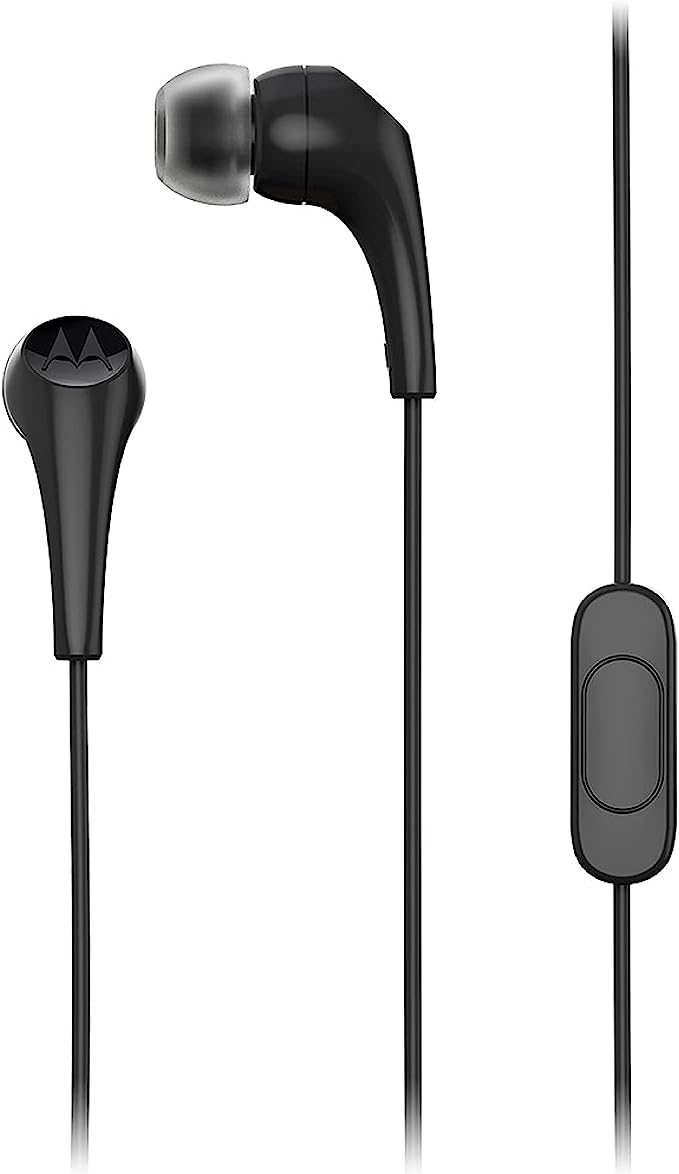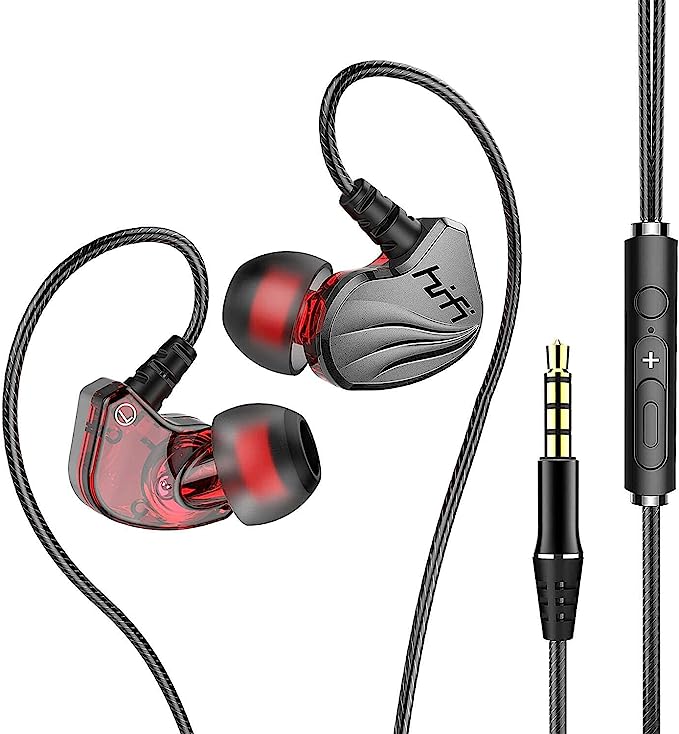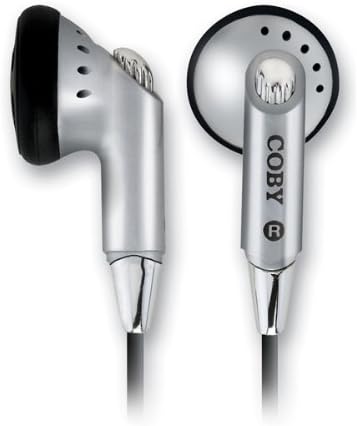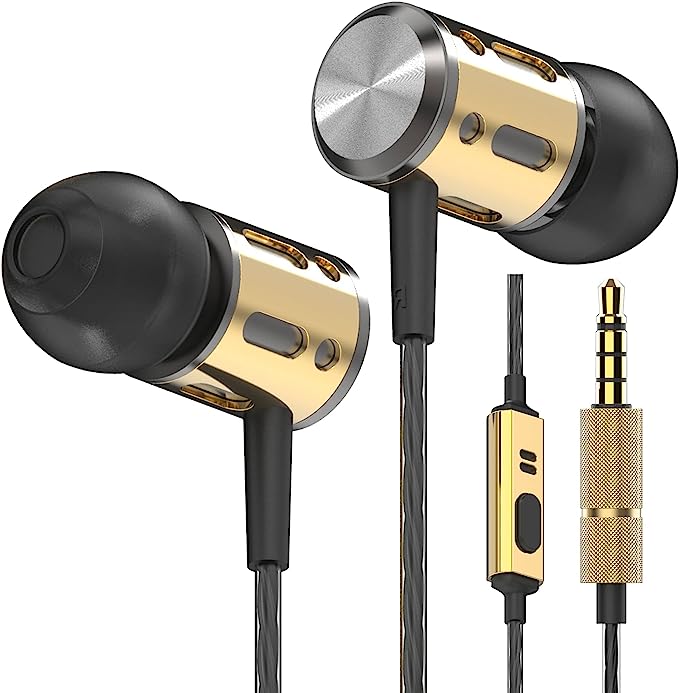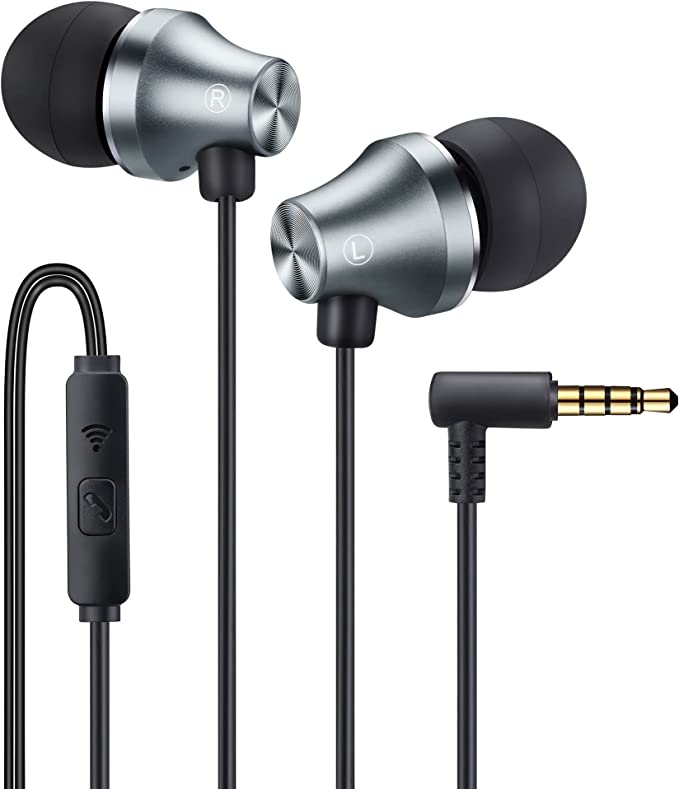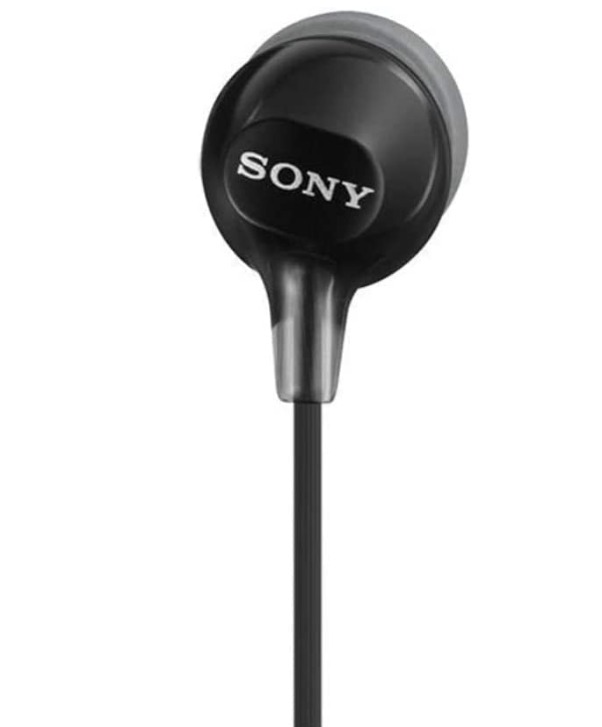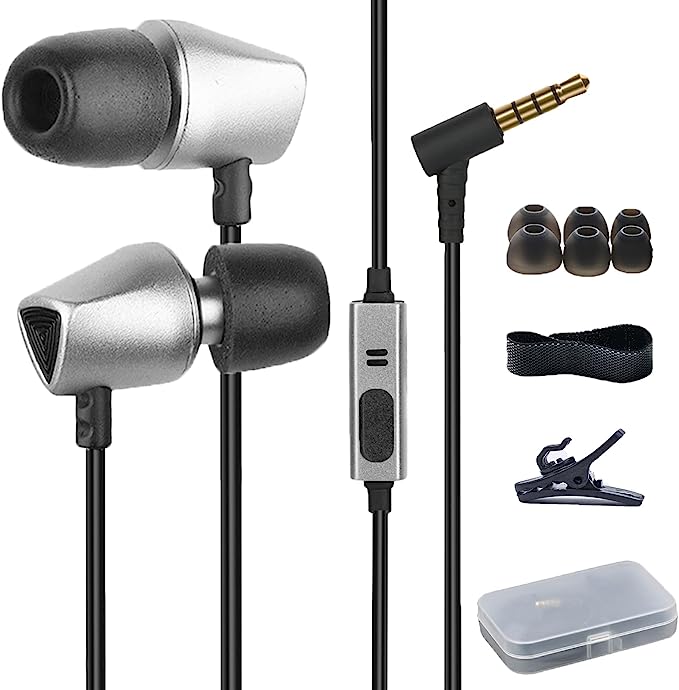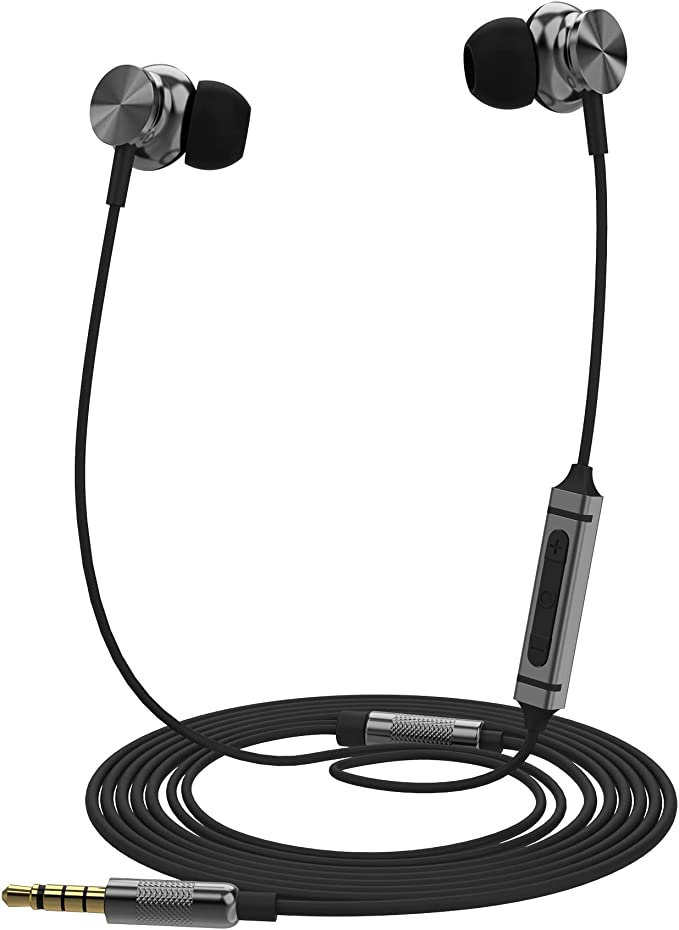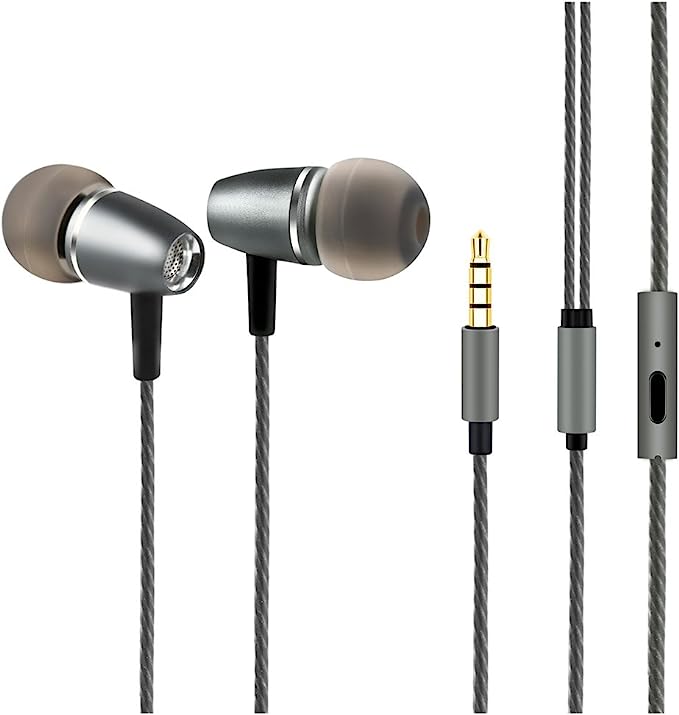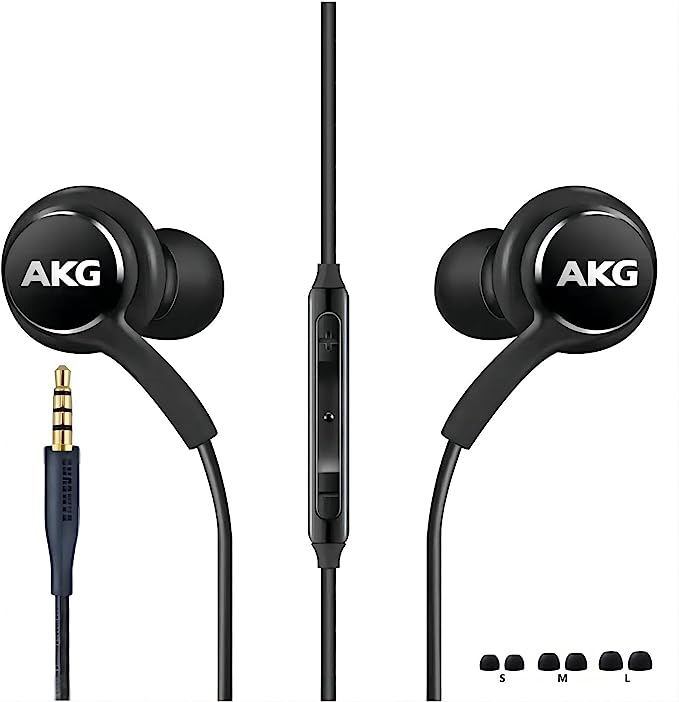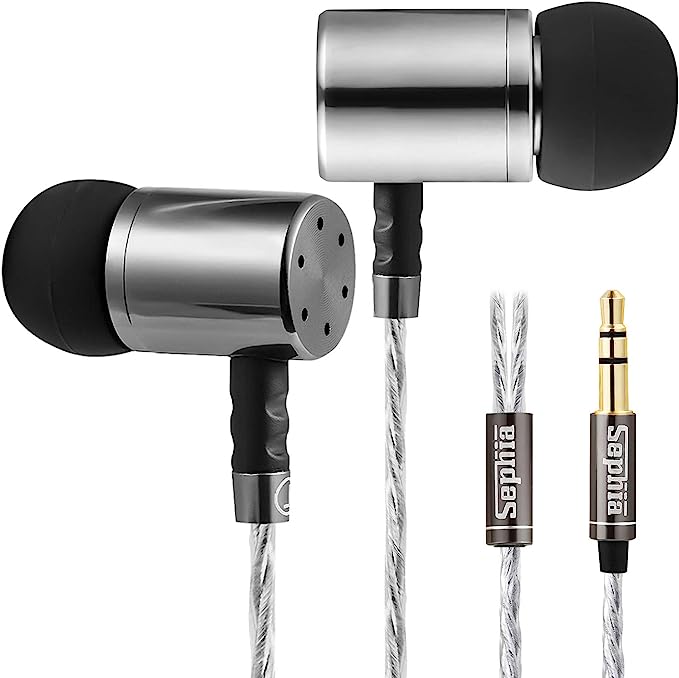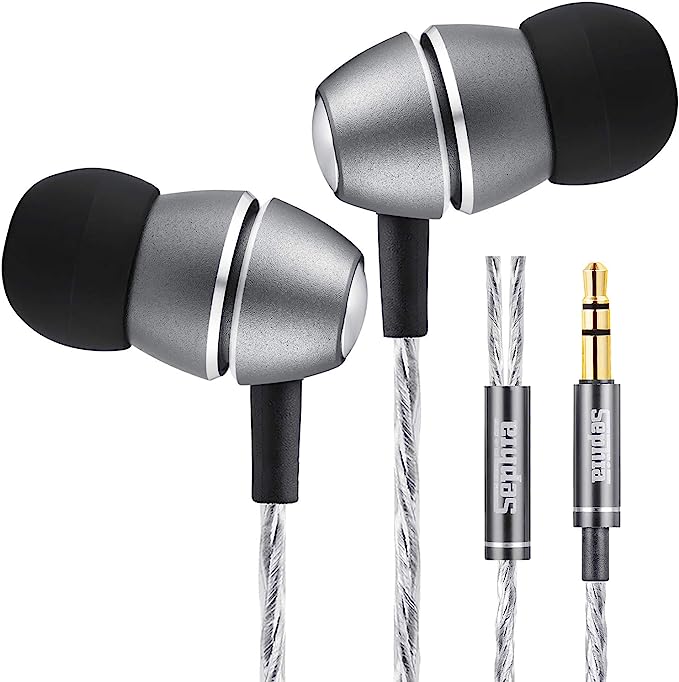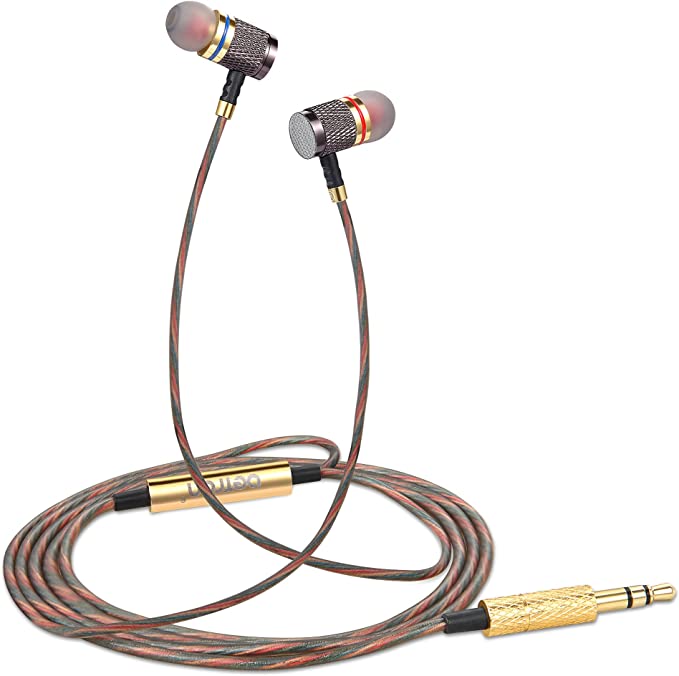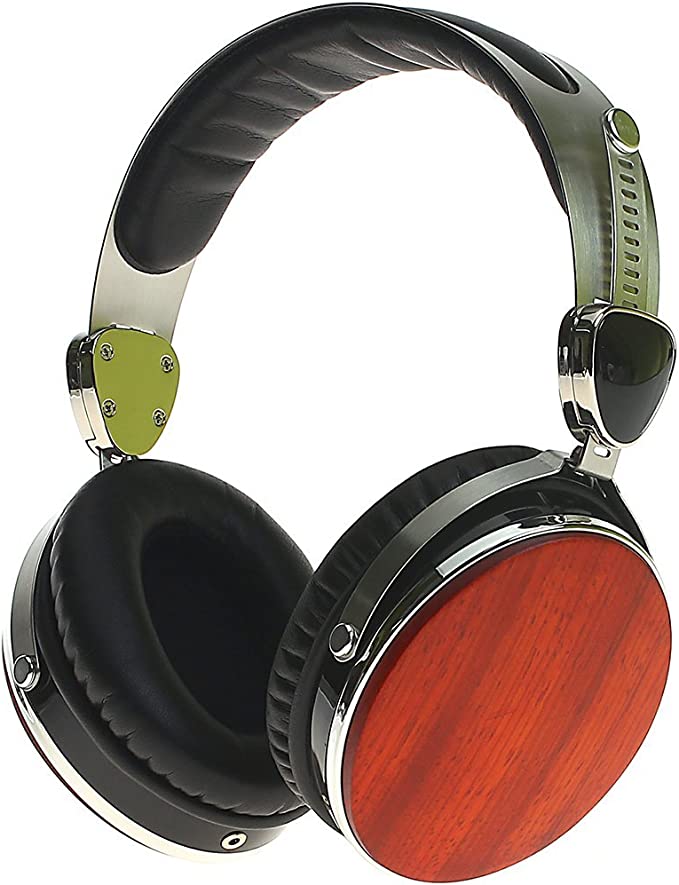Motorola Earbuds 105: The Science of Clear Sound and Comfort in Your Wired Audio Experience
Update on May 14, 2025, 11:48 a.m.
In our hyper-connected, often overwhelmingly wireless world, there’s a certain quiet confidence to a good pair of wired earbuds. They represent a direct, unpretentious conduit to our soundscapes – music, podcasts, the voices of loved ones. But have you ever paused to consider the intricate tapestry of science and engineering woven into these seemingly simple companions? Today, we’re not just looking at a device; we’re embarking on an auditory expedition, with the Motorola Earbuds 105 as our fascinating specimen. As an audio engineer, I find immense satisfaction in demystifying the technology that shapes our listening experiences, and I invite you to join me in uncovering the elegant principles at play.
The allure of wired audio, for many, lies in its straightforward fidelity – a pure, uncompressed signal path from source to ear. While wireless technologies have made incredible strides, the physical connection of a wire still holds a certain unassailable simplicity for many critical listening applications. But simplicity in use doesn’t equate to simplicity in design. Let’s peel back the layers.

The Heartbeat of Sound: Inside the 10mm Dynamic Driver
At the very core of any earbud, the component responsible for transforming electrical signals into the sound waves that dance upon your eardrums, is the driver. The Motorola Earbuds 105, according to their specifications, house “large 10mm drivers.” Now, in the world of audio engineering, “large” is relative, especially in the compact domain of in-ear devices, but a 10mm diameter for an earbud driver is indeed substantial. Think of it as a miniature, high-precision loudspeaker system, shrunk down to fit snugly in your ear.
A dynamic driver, the most common type found in headphones and earbuds, operates on a beautifully straightforward electromagnetic principle, one that harks back to the earliest days of audio reproduction. It consists of a diaphragm (a thin, semi-rigid membrane), a voice coil attached to it, and a stationary magnet system. When an electrical audio signal passes through the voice coil, it generates a fluctuating magnetic field that interacts with the permanent magnet. This interaction forces the coil, and thus the diaphragm, to move back and forth with incredible speed and precision – much like the skin of a drum. These vibrations displace air, creating sound waves.
Why the emphasis on 10mm? Generally speaking, a larger diaphragm has a greater surface area. This allows it to move a larger volume of air with each oscillation. This capability is particularly beneficial for reproducing lower frequencies – the bass notes that provide richness and depth to music. It’s about an ability to create those longer sound waves more effectively. Motorola Sound states these drivers aim for a “crystal clear sound experience” and “deep bass,” and a well-implemented 10mm driver certainly has the physical potential to contribute significantly to both these claims. Of course, size isn’t everything; the diaphragm’s material composition (its stiffness, lightness, and damping properties – though unspecified for this particular model, common materials include Mylar, bio-cellulose, or even more exotic composites in higher-end units) and the overall acoustic design play equally critical roles in achieving that desired clarity across the entire frequency spectrum. But a larger driver, competently engineered, sets a good foundation.
This meticulous engineering aims to translate electrical impulses into an auditory experience that is both detailed and full-bodied, allowing the listener to appreciate the subtle nuances of a string quartet or the visceral impact of a bass drop with equal fidelity.

Sculpting the Sonic Landscape: The Clever Mechanics of Acoustic Design
A driver, no matter how sophisticated, doesn’t operate in a vacuum. The enclosure it’s housed in, and the pathways sound must travel, dramatically shape its final output. This is where acoustic engineering truly becomes an art form, blending physics with an almost intuitive understanding of how sound behaves in confined spaces.
The Bass Note’s Secret Ally: The Built-in Bass Port
The Motorola Earbuds 105 feature what’s described as a “built-in bass port.” This isn’t merely an arbitrary opening in the earbud casing; it’s a carefully tuned acoustic element. In engineering terms, this often functions on a principle similar to a Helmholtz resonator – imagine blowing across the top of a glass bottle to produce a tone. The bottle’s neck and the volume of air inside create a resonant system.
In an earbud, a bass port is a small vent or tube that connects the air volume behind the driver to the outside. The mass of air in the port and the compliance (springiness) of the air inside the main cavity behind the driver form a resonant system. This system is tuned to a specific low frequency. When the driver produces frequencies near this resonant point, the air in the port vibratesเสริม, effectively boosting the bass output. It’s a clever way to enhance low-frequency response without overworking the driver or requiring excessive equalization, contributing to the “deep bass and clarity” these earbuds aim for. A well-designed port helps the bass sound fuller and more extended, rather than boomy or uncontrolled, adding a satisfying warmth and foundation to the music.

The Express Lane to Your Eardrum: Angled Acoustic Tubes
Another subtle but significant design choice mentioned is the use of “angled acoustics tubes.” This refers to the nozzle or conduit through which the sound from the driver travels into your ear canal. Angling this tube might seem like a minor detail, but it serves both ergonomic and acoustic purposes.
From an ergonomic standpoint, the human ear canal is not typically a straight pathway; it has a natural curve. An angled nozzle can often align more naturally with this anatomical structure, leading to a more comfortable and secure fit. This is crucial, because a good seal is paramount for optimal bass response and passive noise isolation, which we’ll discuss shortly.
Acoustically, a more direct path for the sound waves to the tympanic membrane (your eardrum) can be beneficial. It can help minimize unwanted sound reflections and resonances within the tube itself, potentially leading to a clearer, more accurate sound reproduction with better phase coherence – meaning the various frequencies arrive at your ear in better synchronization. While the sonic impact of angling might be subtle compared to driver quality or port tuning, it’s one of those incremental refinements that, when combined, contribute to a superior overall listening experience. It’s about ensuring that the carefully crafted sound from the driver reaches your ear with minimal distortion or alteration, preserving its intended clarity.

The Ergonomic Embrace: Where Science Meets Comfort and Immersion
The most sonically perfect earbud would be utterly useless if it were uncomfortable to wear or if the listening experience was constantly marred by external noise. This is where ergonomics – the science of designing products to fit the human body optimally – and material science play pivotal roles.
The Invisible Art of Weightlessness: Lightweight Design
The phrase “lightweight comfort” appears in the description of the Motorola Earbuds 105, and it’s a factor whose importance cannot be overstated, especially for a device intended to be worn for extended periods. The physics is simple: less mass means less force exerted on the sensitive structures of your ear. Heavy earbuds can cause a sensation of pressure or dragging, leading to ear fatigue and a desire to remove them long before your podcast ends or your album finishes. Engineers achieve lightweight design through careful material selection – often advanced polymers for the housings – and by optimizing the internal components to be as compact and mass-efficient as possible. This isn’t just about comfort; it’s about making the technology feel almost like an extension of yourself, unobtrusive and natural.
The Custom Fit Illusion: Gel Cushioned Earpieces & Ergonomic Shaping
Complementing the lightweight design are “gel cushioned ear pieces” and an “ergonomically designed easy-grip” form factor. Silicone gel, or similar elastomeric polymers, are commonly used for ear tips because of their excellent properties: they are soft, pliable, and can conform to the unique, often irregular, contours of an individual’s ear canal. This ability to adapt is key to achieving what I call the “custom fit illusion” – the sensation that the earbud was made just for you.
This conforming seal serves two critical functions. Firstly, it distributes pressure more evenly within the ear canal, minimizing pressure points that can lead to soreness. Secondly, and just as importantly for audio quality, it creates an effective acoustic seal. This seal is the cornerstone of good bass response (preventing low frequencies from leaking out) and effective passive noise isolation. The “ergonomically designed” contours of the earbud housing itself further contribute to a stable and comfortable fit, ensuring the earpieces stay in place and are easy to handle when inserting or removing them. It’s a delicate dance between material science, anthropometry (the study of human body measurements), and acoustic necessity.
Your Personal Auditory Bubble: The Power of Passive Noise Isolation
The term “Noise Isolation” is highlighted for the Earbuds 105, and one user, Maria A. Romero, even lauded their “great noise cancelling.” For a wired earbud like this, this almost certainly refers to passive noise isolation, a very different beast from active noise cancellation (ANC). ANC involves microphones and sophisticated electronics to generate anti-noise that actively cancels out ambient sounds. Passive isolation, however, is all about fundamental physics and smart physical design.
It works by creating a physical barrier that blocks or attenuates external sound waves before they can reach your eardrum. The effectiveness of this barrier depends on two main things: the materials used and, crucially, the quality of the seal the earbud makes with your ear. The aforementioned gel earpieces are vital here. By forming a snug, occluding fit, they significantly reduce the intrusion of higher-frequency ambient noises – think chatter, office hum, or traffic whoosh. Lower frequencies are harder to block passively due to their longer wavelengths, but a good seal still makes a noticeable difference.
The benefit of effective passive noise isolation is twofold. Firstly, it creates a more immersive listening experience, allowing you to hear more of the detail and nuance in your audio content without the distraction of your surroundings. Secondly, it often enables you to listen at lower, safer volume levels because you’re not constantly trying to overcome external noise. This is better for your long-term hearing health and provides a more relaxing experience overall. It’s like drawing the curtains in a room to better appreciate the glow of a candle – you’re creating your own personal auditory bubble.
The Conductor’s Baton: Microphone and In-Line Controls
In our multifaceted digital lives, earbuds are rarely just for passive listening anymore. The Motorola Earbuds 105 acknowledge this with the inclusion of an in-line microphone and a “control button for calls/music.” While perhaps not as acoustically glamorous as driver design, these features are born from their own branch of clever engineering and are indispensable for modern convenience.
The in-line microphone, likely a miniaturized MEMS (Micro-Electro-Mechanical Systems) microphone – a common technology in today’s portable electronics due to its small size, low power consumption, and good sensitivity – converts your voice into an electrical signal that can be transmitted during calls. Its placement is a careful balance, needing to be close enough to the mouth for clear voice pickup without being obtrusive.
The control button is a marvel of simplicity. It typically relies on a simple electrical circuit. Pressing the button completes a circuit in a specific way (e.g., a short press, a double press, a long press), which your connected device (phone or music player) interprets as a command – play, pause, skip track, answer call, or end call. It’s the tactile interface that allows you to conduct your audio world without constantly reaching for your primary device. These features transform the earbuds from a mere listening device into a versatile communication and control hub, seamlessly integrating into the flow of daily activities.
Coda: The Enduring Harmony of Engineering and Experience
Our journey through the inner workings of the Motorola Earbuds 105 reveals a fascinating interplay of physics, material science, and ergonomic design. From the carefully calibrated oscillations of the 10mm dynamic drivers to the acoustically tuned bass port, the strategically angled sound tubes, the body-kindness of lightweight materials and gel cushions ensuring comfort and isolation, and the simple elegance of integrated controls – each element is a testament to thoughtful engineering.
It’s easy to take such a ubiquitous piece of technology for granted. Yet, as we’ve seen, even a modest pair of wired earbuds can be a miniature marvel, a symphony of precisely orchestrated components working in concert to deliver sound to our ears. Understanding the science behind these features doesn’t diminish their magic; rather, it deepens our appreciation for the ingenuity involved.
The directness of a wired connection, the tangible feel of the controls, the cocoon of sound created by a well-fitting earpiece – these experiences are all underpinned by the diligent application of scientific principles. And so, the next time you plug in your favorite wired earbuds, perhaps you’ll listen a little differently, with a newfound respect for the unseen alchemy that transforms simple wires and drivers into a personal portal to worlds of sound. It’s a beautiful reminder that at the heart of great technology lies a profound understanding of how we, as humans, interact with the world, and in this case, how we connect, through the elegant language of sound.
